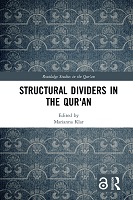Chapter 6 A Preliminary Catalogue of Qur’anic Sajʿ Techniques
Proposal review
Beat Patterning, Parallelism, and Rhyme
Abstract
This essay proposes a preliminary catalogue of fifteen suggested sajʿ structures, with representative Qur’anic examples. The basic rules that govern Qur’anic sajʿ have already been carefully elucidated by Devin Stewart in a series of articles on this subject. Stewart has also provided some exploratory illustrations of where individual sajʿahs might combine to form consecutive strings of sajʿ units. Yet the statement of the medieval rhetorician Ḍiyāʾ al-Dīn ibn al-Athīr (d. 637/1239) that it is only the occasional need for “brevity” (ījāz) and “concision” (ikhtiṣār) that precluded the Qur’an from having been written entirely in sajʿ suggests that, at some point, many more of the Qur’an’s rhetorical features must have been seen as having being informed by the rules and the rhythms of sajʿ than the current perception of Qur’anic sajʿ in the Western Academy might lead one to imagine. The idea that Qur’anic sajʿ might in fact operate within a deliberate give and take of sajʿ’s three distinct parameters—end rhyme, accentual beat patterning, and grammatical parallelism—proved to be a fruitful one in categorizing a number of the passages highlighted by Ibn al-Athīr as illustrative of the phenomenon of sajʿ in the Qur’an. Using this methodology it was possible to create a number of strings of consecutive sajʿahs that would otherwise have fallen outside of the parameters of sajʿ as it is currently understood.
Keywords
sajʿ structure; grammatical parallelism; discourse, surahISBN
9780367800055Publisher
Taylor & FrancisPublisher website
https://taylorandfrancis.com/Publication date and place
2020Imprint
RoutledgeClassification
The Koran (Qur’an)
Islam
Regional / International studies


 Download
Download Web Shop
Web Shop